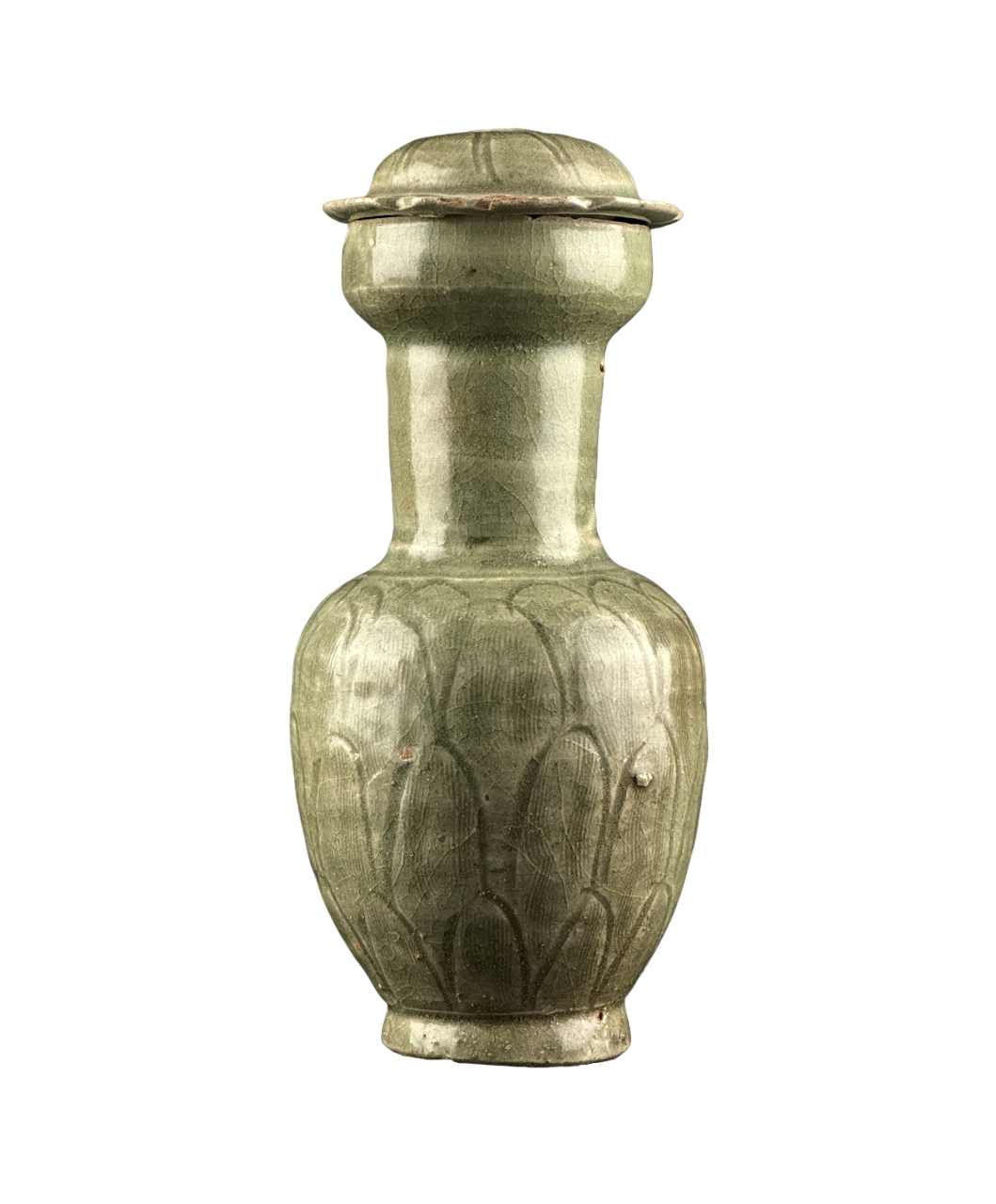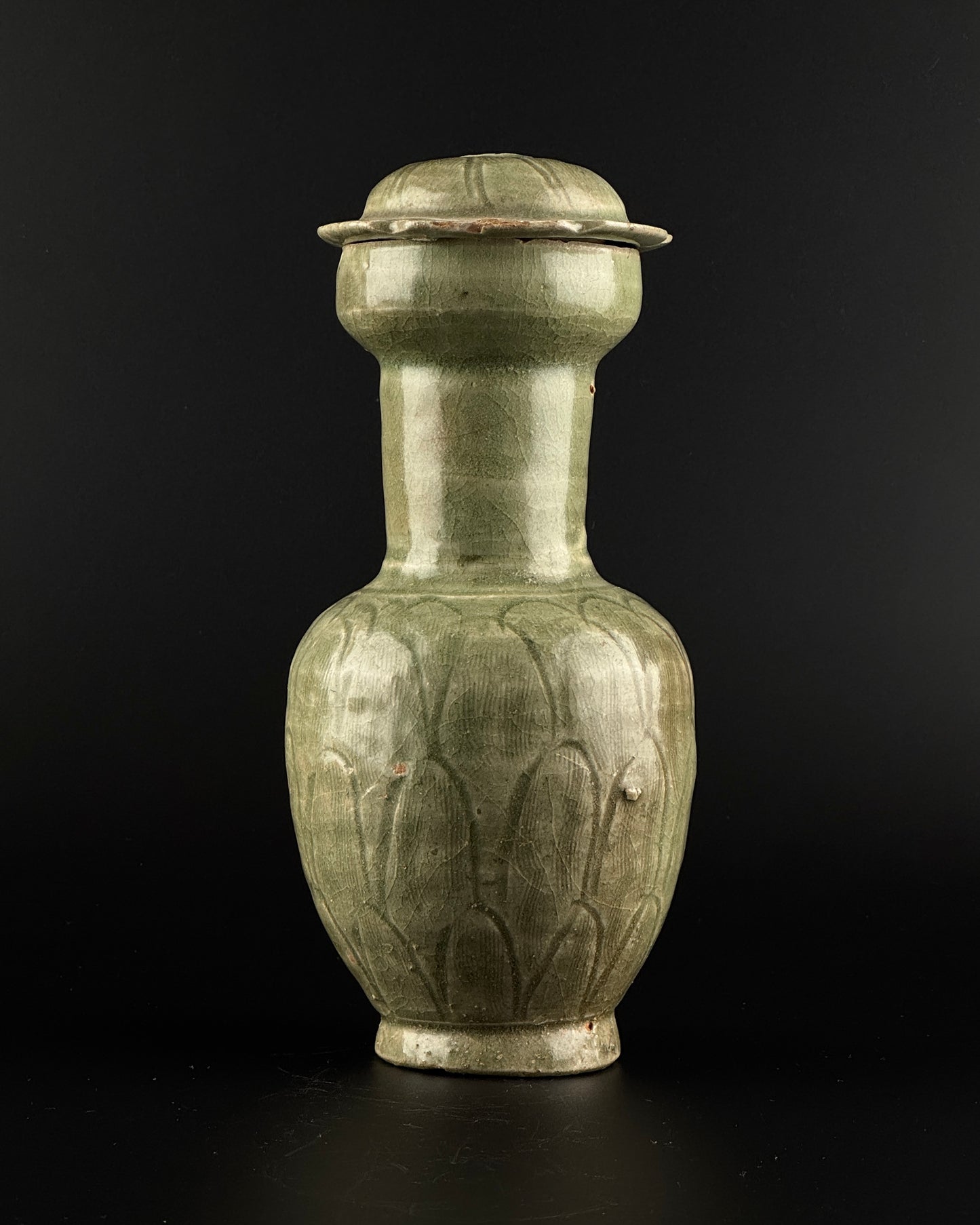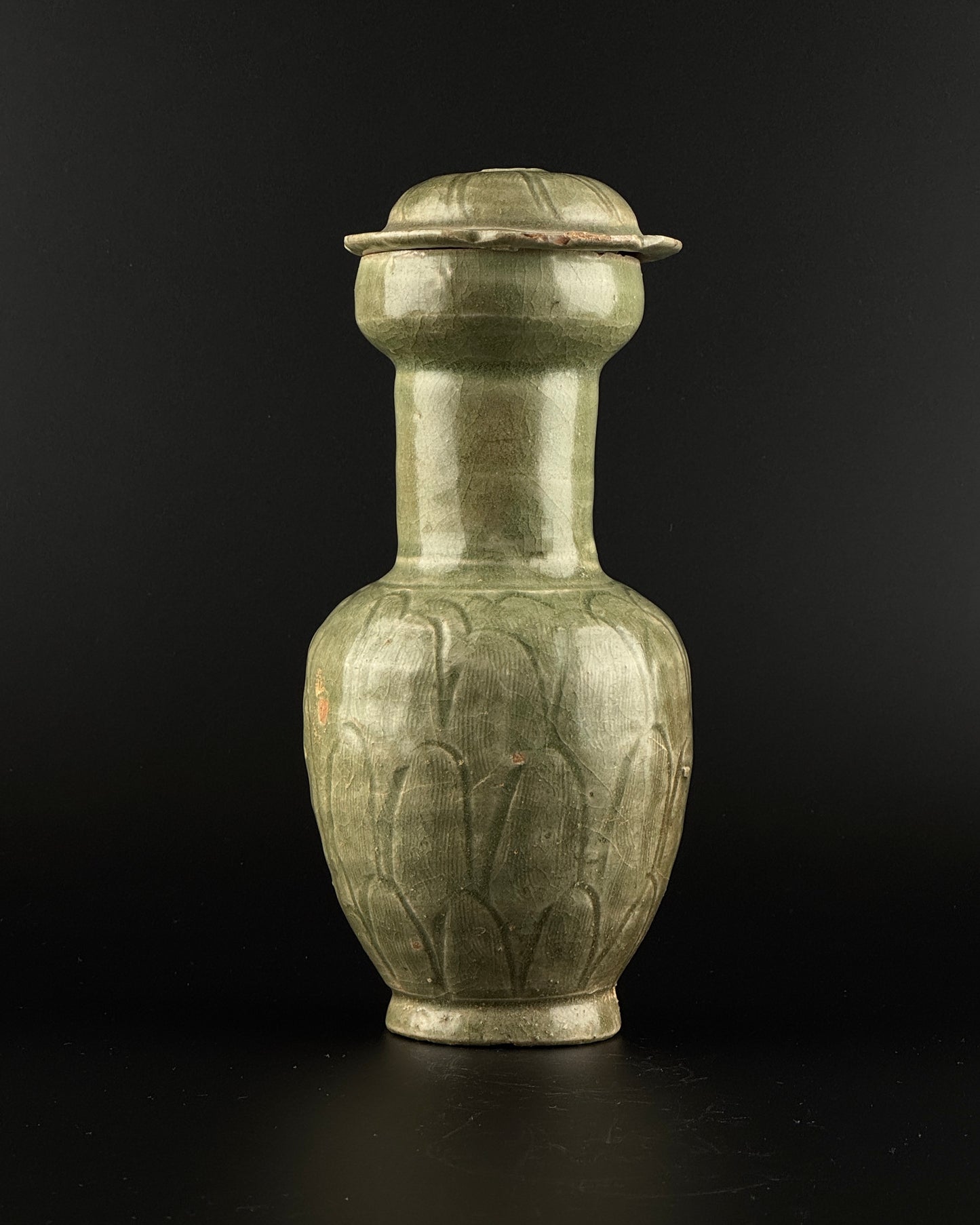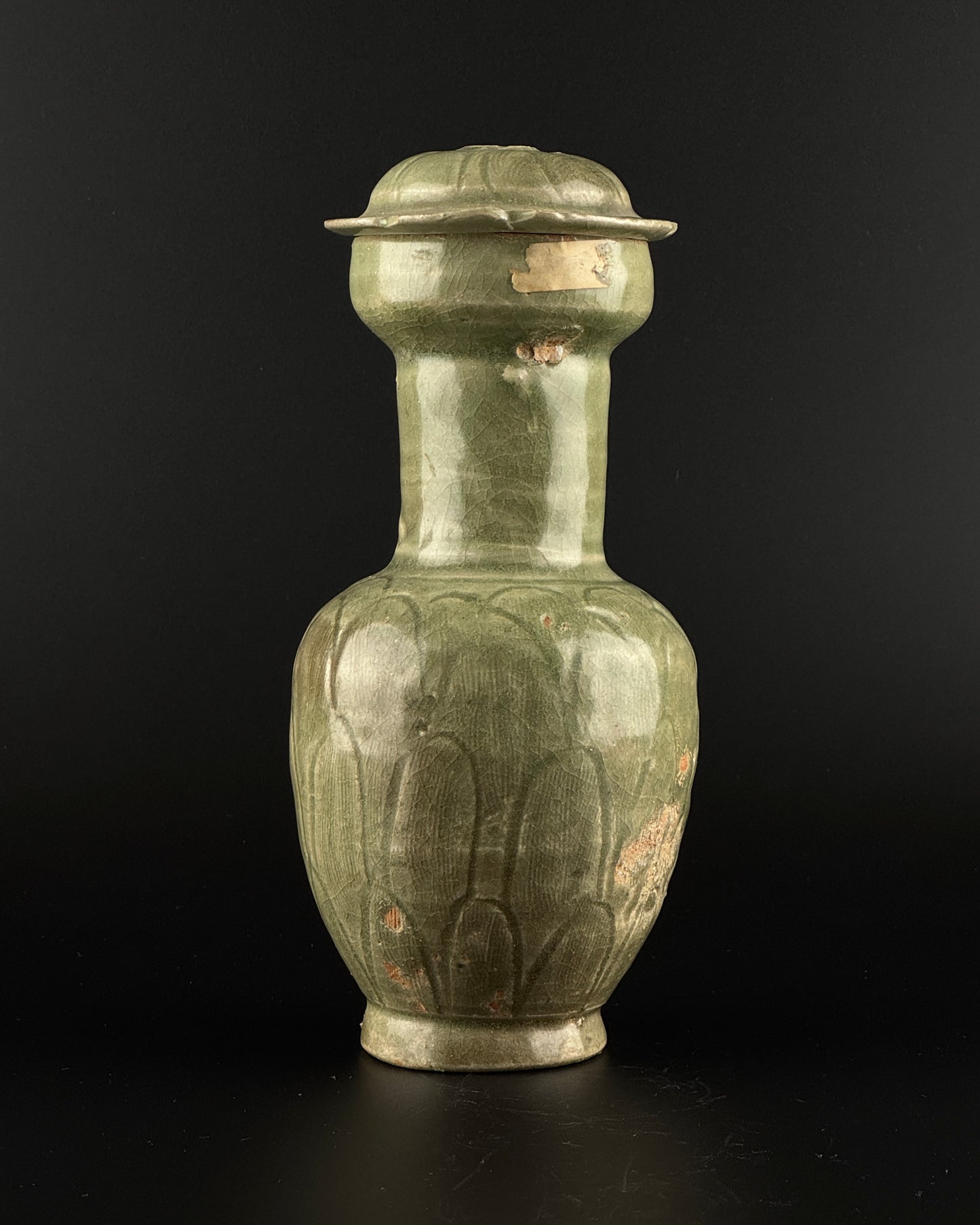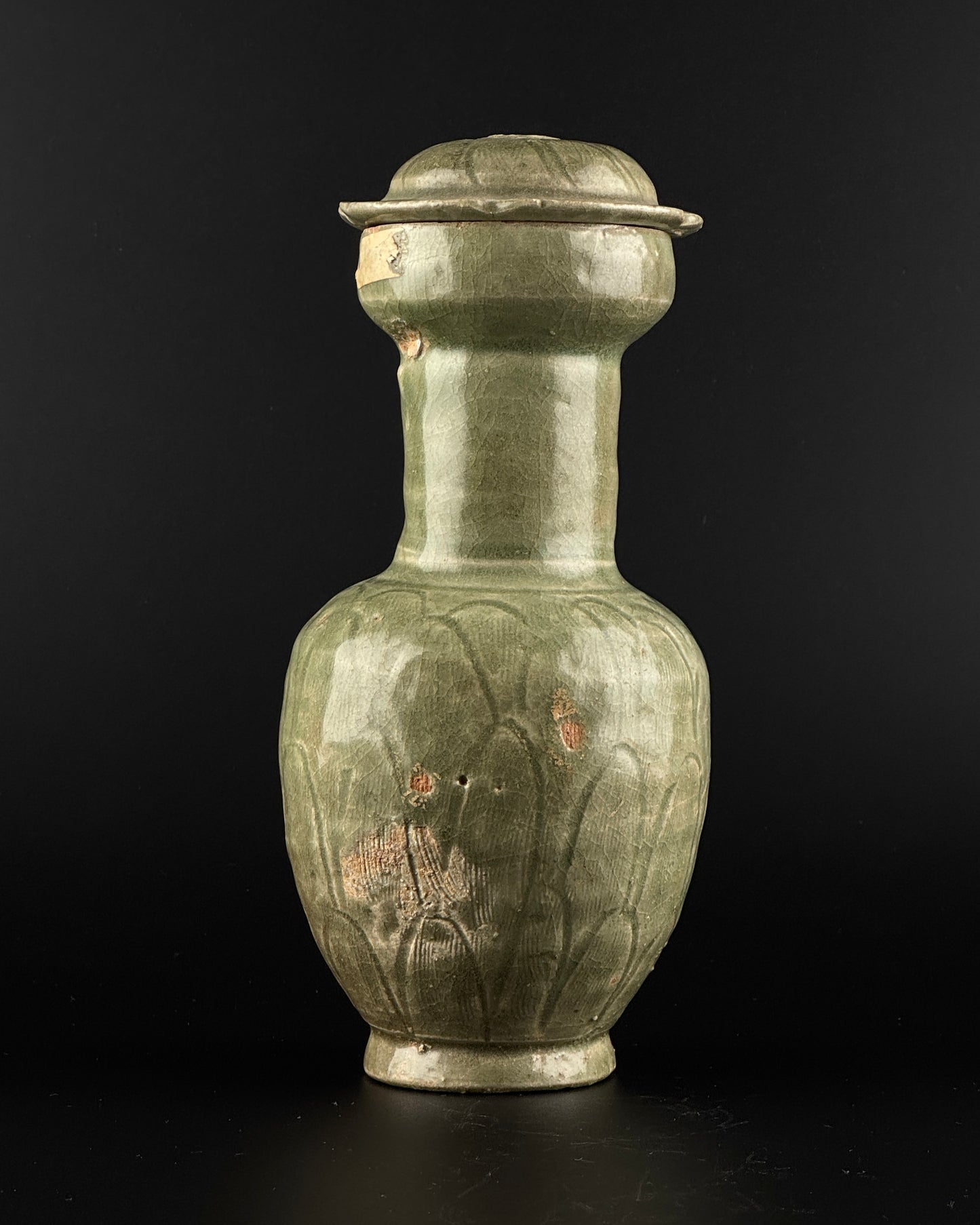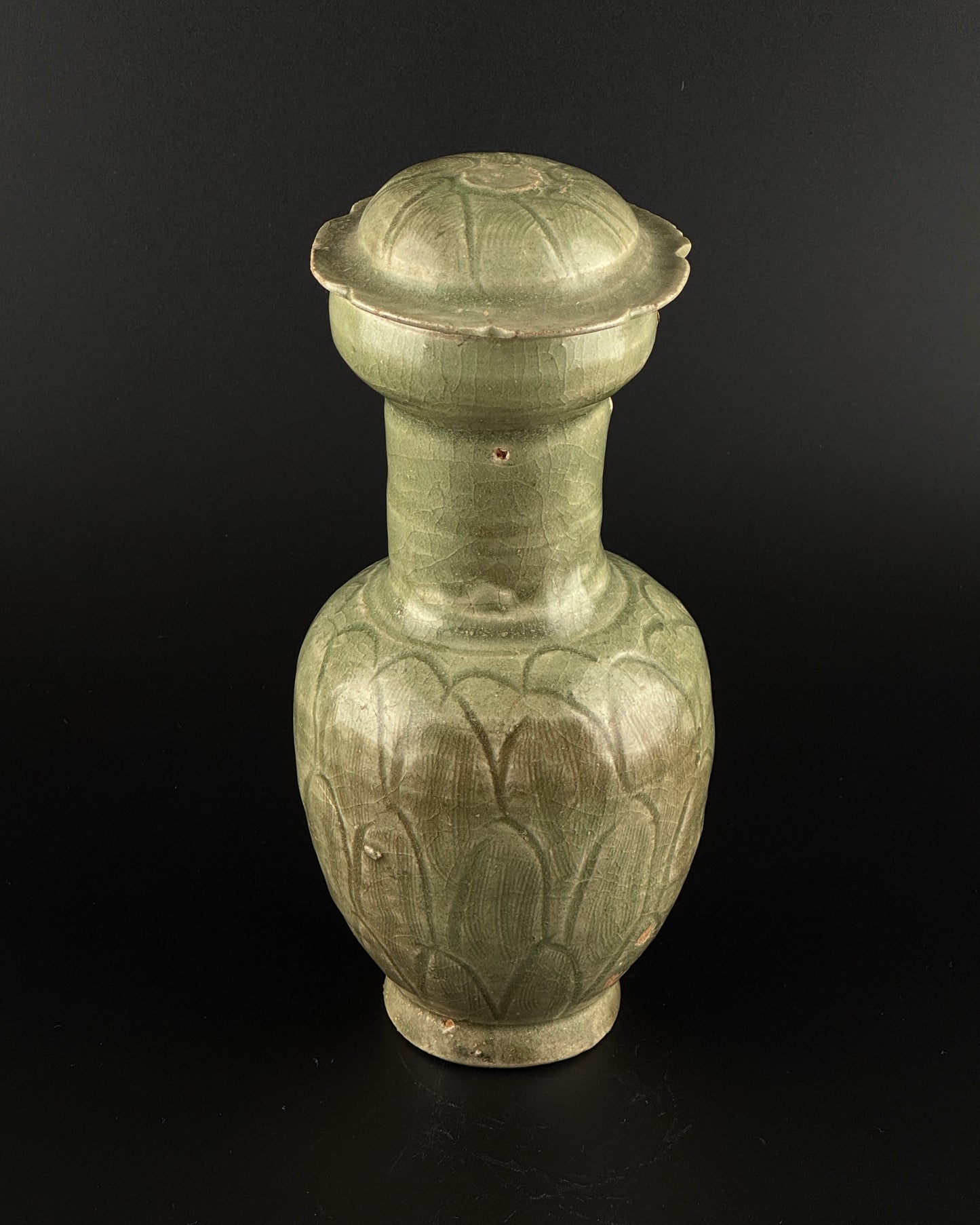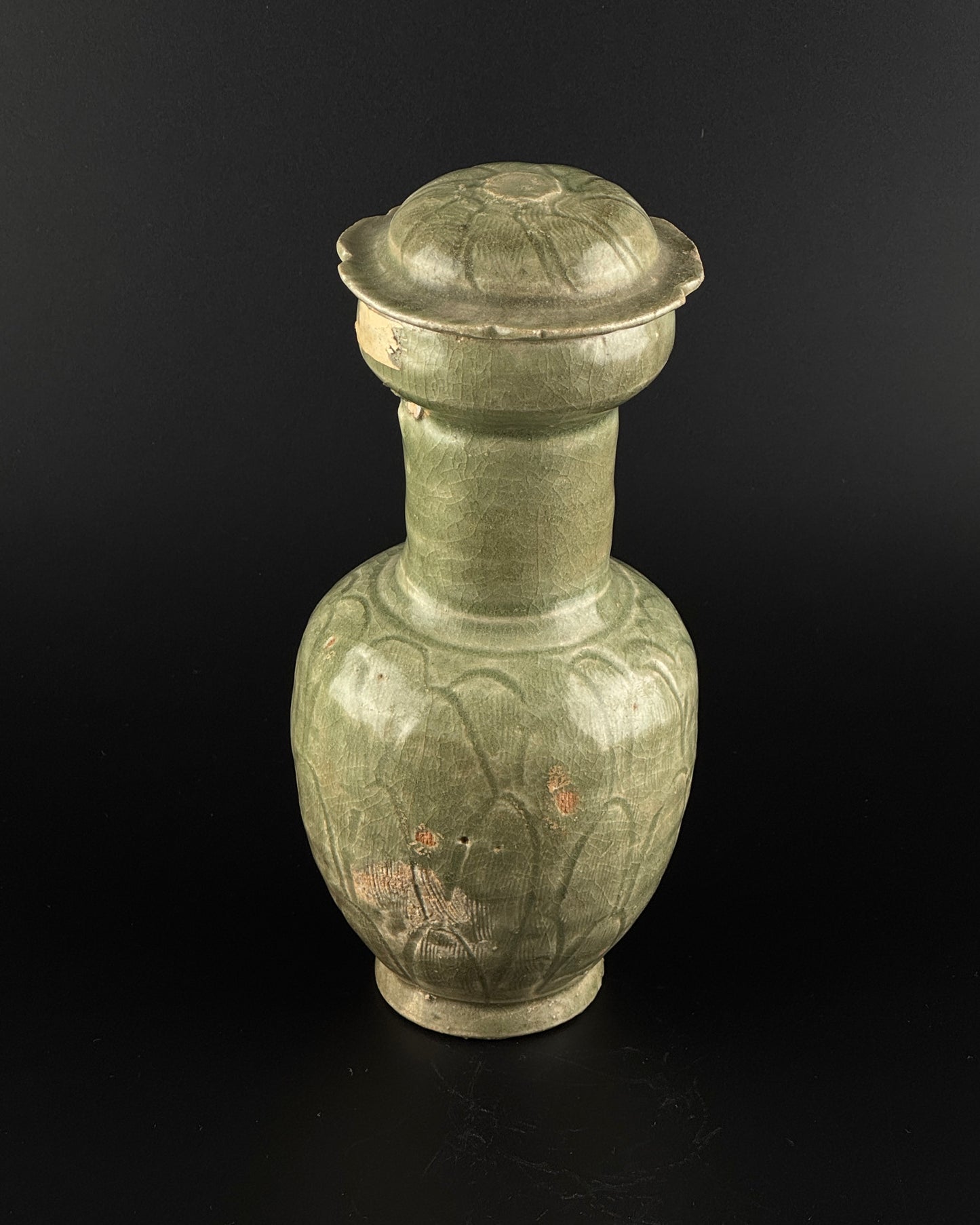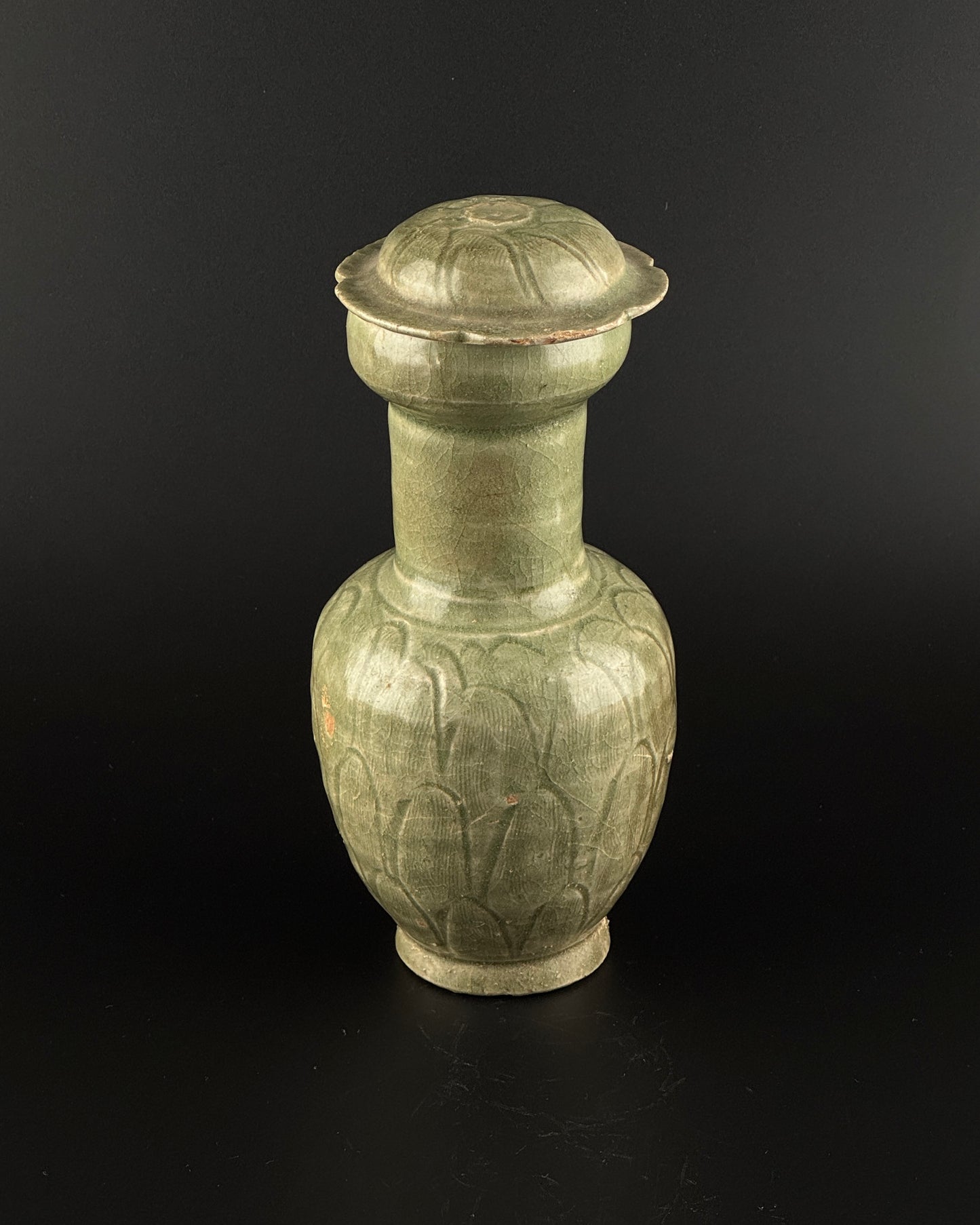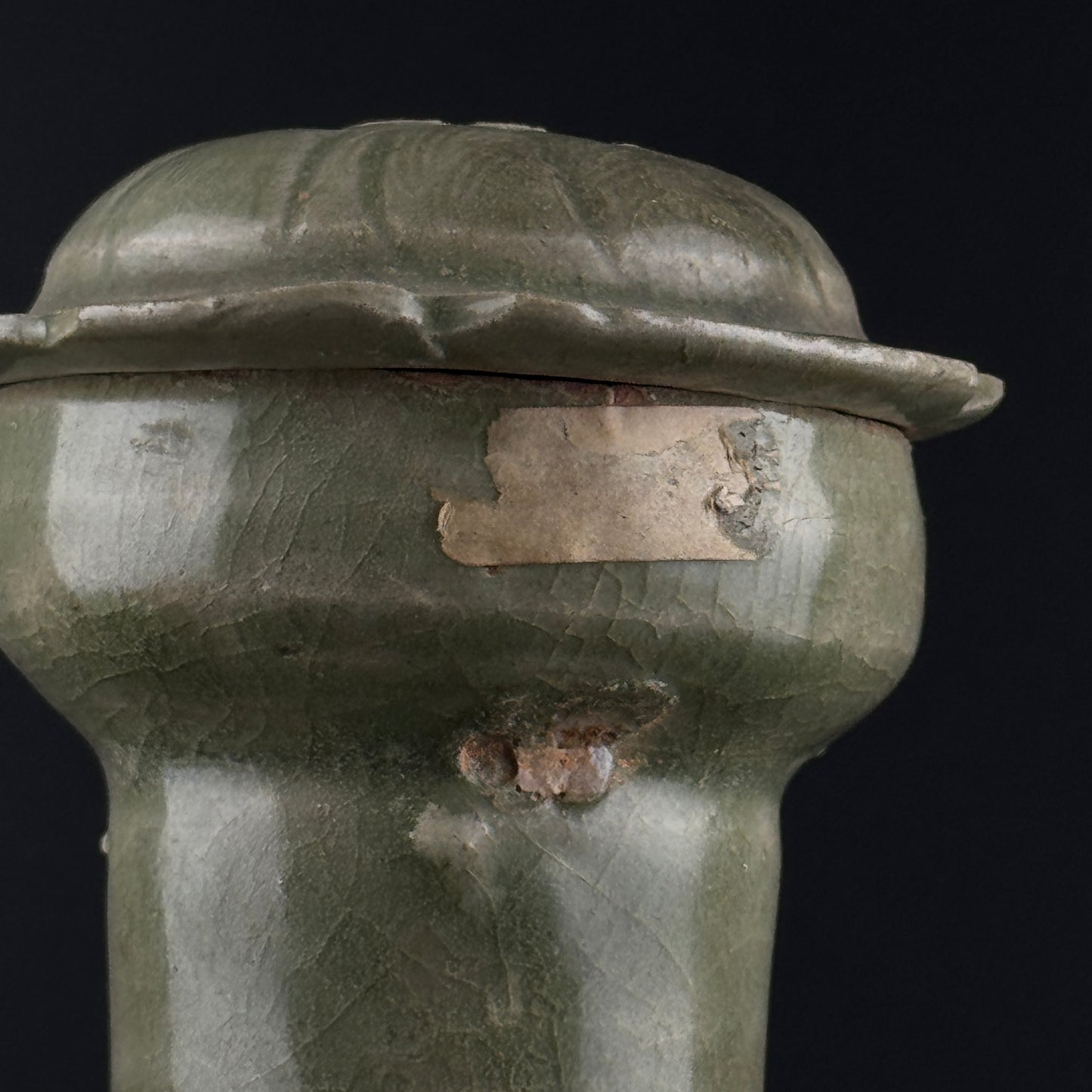AUA Oriental Art
LONGQUAN CELADON 'LOTUS PETAL' JAR AND COVER, NORTHERN SONG DYNASTY(11th-12th century)
LONGQUAN CELADON 'LOTUS PETAL' JAR AND COVER, NORTHERN SONG DYNASTY(11th-12th century)
Couldn't load pickup availability
The jar is sturdily potted with an oval shaped body carved with overlapping lotus petals below the straight neck. All covered with a crackled glaze of olive-green color with the exception of the base of the jar. Chips and traces of oxidation on parts of the body.
Period : Song Dynasty
Type : Celadon
Medium : Longquan ware
Size : 24cm(Height) x 8cm(Mouth Diameter)
Condition : Good (Chips and traces of oxidation on parts of the body)
Provenance : Acquired in late 1990s from Hongkong
Reference :
1) Tokyo National Museum - TG-722
(Type : Closely related)
https://colbase.nich.go.jp/collection_items/tnm/TG-722?locale=ko
2) Christies HONG KONG 2 DEC 2015 - The Classic Age of Chinese Ceramics - The Linyushanren Collection, Part I - Lot 2804
(Type : Related)
https://www.christies.com/en/lot/lot-5953556
3) Art Institute Chicago - Reference Number 1964.783a-b - Covered Jar with a Seated Dog
(Type : Closely Related)
https://www.artic.edu/artworks/21514/covered-jar-with-a-seated-dog
* Song Dynasty Longquan Celadon
Longquan celadon refers to a type of Chinese ceramic that was famous for its distinctive glaze and high-quality craftsmanship, primarily produced during the Song Dynasty (960–1279 AD). These ceramics were made in the Longquan region of the Zhejiang province in eastern China, an area rich in the clay and mineral resources necessary for ceramic production.
The most notable characteristic of Longquan celadon is its glaze, which ranges in color from a pale blue-green to a deep olive green. This unique color comes from the iron oxide in the glaze, which, when fired in a reducing kiln atmosphere, produces the green hue. The thickness of the glaze, as well as the firing conditions, could affect the final shade and appearance of the celadon, with some pieces exhibiting a more crackled texture and others a smoother, glossier finish.
Longquan celadons were highly prized for their beauty and durability, making them popular both domestically within China and internationally. They were exported widely, reaching as far as Southeast Asia, the Middle East, and Africa, where they were often considered luxury items and treasured by various cultures.
The designs of Longquan celadon wares varied from simple and elegant forms to more elaborate decorations, including carved or incised motifs inspired by nature, such as lotus flowers, phoenixes, dragons, and foliage. Despite the variations in decoration, the emphasis was always on the harmony between form, glaze, and decoration, with the glaze playing a crucial role in enhancing the overall aesthetic appeal of the piece.
During the Song Dynasty, Longquan celadon was one of several major types of ceramics produced in China, each with its own distinctive characteristics. However, the quality and beauty of Longquan celadon made it one of the era's most celebrated ceramic types, and it continues to be highly valued by collectors and scholars today.
Share
